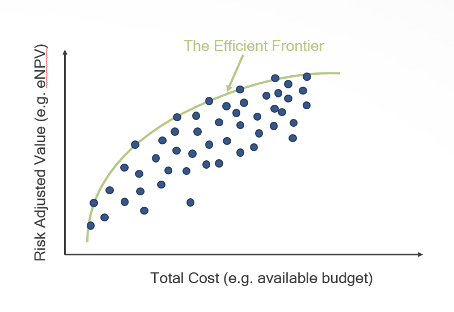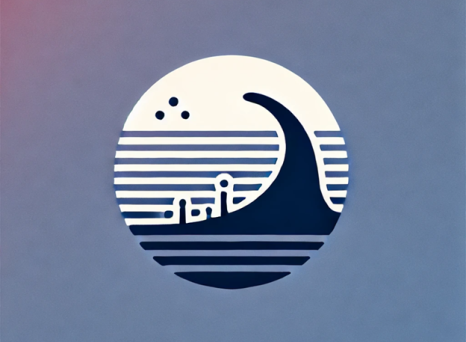The world of project portfolio management (PPM) has changed significantly over the years. More specifically, since the early 2000’s, we’ve seen the emergence of new technologies and innovative organizational strategies take project management to an entirely new level—setting new rules of engagement to help organizations run their projects more smoothly and efficiently.
These advancements have unquestionably defined what we consider to be PPM today as well as where we see this field moving in the future. But what exactly were these advancements? What role have they played in influencing how we approach project management today?
In this article, we will answer these questions by looking at six PPM trends that emerged in the 2010’s and, since then, have become adopted as de facto project management best practices.
1. Scaled Agile
Since the Agile Manifesto was first published in 2001, it has become a cornerstone of cross-functional and highly collaborative project management: initially revolving around software development and eventually making its way into other business areas where more adaptive project management techniques—as opposed to traditional waterfall methods—were quickly becoming necessary. It wasn’t until the early 2010’s, however, that companies began to see the promise of Agile as a potentially broader, organization-wide construct that could be successfully applied beyond individual teams.
This was further fuelled by the development of the Scaled Agile Framework (SAFe), defined by Wikipedia as a set of organization and workflow patterns intended to guide enterprises in scaling Lean and Agile practices—adapted to organizations of any size and at varying levels of commitment to Agile methodologies.
SAFe, along with other methodologies focused on solving the problem of scaling Agile methodologies beyond a single team—most notably, large-scale Scrum (LeSS), disciplined Agile delivery (DAD), and Nexus—was aimed at providing a “big picture” view of how work flows through teams and across organizations. At Planisware, we’ve seen a number of our customers, across all industries and categories, experiment with SAFe to increase the effectiveness of their product development and decision-making processes.
2. Artificial Intelligence (AI)
It’s nearly impossible to talk about innovation today without referencing artificial intelligence (AI) and its impact on the broader business environment in some way. To think how much it has advanced over the last decade—as well as just how much people talk about it, even when they don’t really know what AI is at its very core—is truly mind boggling. It is, without any doubt, the biggest tech super-trend of the last decade; its newfound application to the world of project management is no exception to this rule.
The combination of hardware advancements (i.e. more memory, greater processing power), the rise of big data, and the evolution of machine learning algorithms based on neural networks (aka, “deep learning”) has made it possible for technology to harness the power of data to provide actionable insights and automated processes that had only been the thing of fantasy or conjecture until very recently.
This holds a tremendous amount of promise for the world of PPM. As we all know, many projects today typically sit atop large datasets of structured information. Until recently, to make sense of it all, data scientists had to manually “connect the dots” between all sorts of complex variables and dependencies. Not only is this tedious, but it’s also quite time-consuming.
That’s just one of many reasons why we developed our AI-powered Planisware Predictive Analysis solution, in an effort to help our customers quickly and easily spot outliers and data quality issues within datasets or, as Jean-Philippe Castells, IT Director at UCB, one of the world’s largest pharma companies, puts it, “It’s as though the defects simply jump out at your face!”
Similarly, we’ve woven AI into Planisware Predictive Estimation as well, to help our customers discover the elements that influence any given situation (“drivers”) behind estimating trends and data points in order to better understand what’s really driving project activities. This, in turn, makes it easier to predict project costs, timelines, and resource levels as well as help leaders build stronger business cases around those projects.
"Usually the best ideas don’t come from us but from our user base. We are still in the early stages and continue to explore the benefits of using machine learning with our customers. We provide the cool technology, but it’s our customers who show us what can really be done with it."
- Pierre Demonsant, Planisware CEO
3. Advanced portfolio optimization
Let’s start with a really simple history lesson:
● 1990’s: Businesses discovered the importance of projects.
● 2000’s: Businesses then became aware of the importance of project portfolios.
● 2010’s: Businesses devised advanced portfolio optimization techniques to extract the greatest amount of value out of project portfolios.
Here’s why this is important. Very few organizations have the time or resources to tackle every potential project that rises to the surface, therefore requiring them to develop criteria to determine which projects warrant getting the “green light.” Ideally, these are the projects that provide organizations with the greatest amount of long-term value.
One such portfolio optimization technique is the Efficient Frontier, which allows organizations to identify, from among a set of potential projects, what the ideal portfolio or set of projects would be for driving maximum value for the organization.

Another useful technique is the Waterline Analysis, where you take all potential projects and score them based on what’s more important to your organization—whether that criteria is based on strategic priorities, budgets, or other factors is entirely up to you. Then, you order the projects from high to low, adding projects to your portfolio, from the top down, until you hit your (budget or resource) limit, aka your “waterline.” All projects that didn’t make the initial cut go below this line; however, this doesn’t mean those projects are dead in the water. Quite to the contrary, you can make trade-offs between projects above and below the waterline. For example, you could choose to replace one larger project above the line with multiple smaller projects below the line, only if their combined score is higher than the larger one’s on its own.
4. Productization
While the 90’s may have been the decade where projects had their time in the spotlight, it wasn’t until the 2010’s that products finally got their time to shine. In fact, during this time, many organizations shifted away from project visions (defined by clear scopes, resource needs, and predetermined beginning and end points for reaching a desired outcome) to product visions (creating objects or services that seek to solve specific consumer problems over time).
This shift towards a product focus makes immediate sense for the creation of physical goods, like cars, computers, and commercial airplanes, but may seem a bit more abstract when it comes to services, like software and SaaS platforms, even though both apply product vision thinking as a way to create consistent and standardized solutions that solve business problems. This applies where the products being created are targeted for external or internal audiences as, for example, solutions developed by an organization’s IT team can be deployed to serve the needs of employees (in other words, their customers).
That being said, project management shouldn’t be confused with product management. Although there are similarities between the two, product management differs in these ways:
- Product management approaches business needs holistically, while projects identify specific solutions for addressing business needs;
- Product management embraces a longer-term view of the ever-evolving trajectory of customer needs; and
- Product management exists solely to solve a customer problem at all costs, whereas projects are limited by the constraints set at a project’s onset.
Coincidentally, the tools used in both product and project management are quite similar—roadmaps, P&L’s, and kanban boards, for example—but how those tools are used and how information is captured along the way can differ significantly. In many ways, leaning on a product vision—or productization—has given rise to a paradigm shift for many organizations, one that can entirely change how you perceive your business and its operations at the macro-level, regardless of the tools you use to create products or complete projects.
5. Distributed and remote teams
It’s no secret that remote work has become a growing trend over the last few years. (The current situation around the world has underscored this even further.)
However, in the early 2010’s, when there were shortages around specialized skills within the tech industry specifically, businesses had no choice but to consider a new reality: that teams would not necessarily all co-exist in the same location, thereby making the concept of distributed or remote teams a new norm for many organizations. This inspired companies to start thinking about what other job functions could operate remotely as well, which, in turn, created a domino effect whereby distributed or remote work quickly became a “new normal.”
In From Chaos to Successful Distributed Agile Teams Collaborate to Deliver, authors Johanna Rothman and Mark Kilby define distributed teams in this way:
“The optimal distance for communication frequency is less than eight meters. Once team members are separated by 30 meters—and this includes separation by stairs or elevators—their chance of off-the-cuff communication declines dramatically.”
It goes without saying that working in teams is not always easy. Communication between team members can oftentimes become quite complicated and charged. Adding distance to the equation, whether team members sit in different office locations or whether they live in different time zones, can render those team dynamics even more complex. And even though technology has come a long way to ensure that people can stay connected via email, telephone, video conference, and chat throughout the day, these limit teams from recognizing nuances in body language and tone, therefore leading to all kinds of misunderstandings. (Not to mention, let’s forget about those serendipitous friendly encounters around the “water cooler.”)
Not to throw salt on the wound, but this becomes even more difficult in Agile team structures as close collaboration and interaction is at the very heart of the creation process. However, even in these structures, thanks to the advent of advanced communications technologies that have proven to fuel collaboration, the notion of remote work has quickly become a commonplace way in which the world now works.
6. SaaS platforms
Up until the early 2010’s, PPM tools and solutions were “on-premise” only: in other words, an organization would buy software which it would then host on its own IT infrastructure.
SaaS platforms have changed this entirely, creating a new “buy and host” model where organizations purchase software licences hosted remotely by tech companies This is what we all know today as the “cloud.” There are many benefits to this approach:
- Budget management: Many SaaS-based platforms operate on subscription models, which means organizations do not have to pay a full software license upfront but rather based on usage. If people aren’t using the tools provided, it’s as easy as revoking a license to cut unnecessary costs.
- Low infrastructure costs: Because these tools are hosted by the vendor, organizations no longer have to invest in high infrastructure cost - overhead, implementation, and maintenance - to get them in the hands of employees. SaaS platforms, by definition, are “all in,” meaning they have few hidden costs and are not a burden on resources.
- Non-stop innovation: As opposed to single software installations that slowly become obsolete over time, SaaS-based tools are constantly updated over time - no additional installation necessary. This means that teams will always have access to the latest versions of purchased products and services, as part of the subscription fee.
Because these solutions tend to veer towards out-of-the-box implementation, with potentially very little customization required—which also avoids “breaks” during product upgrades as well as the need for costly re-developments—a greater focus on user experience and functionality has become the priority. After all, who wants to use a product with a poor user experience?
Tech companies know this and are acutely aware that revenue growth is directly tied to long-term adoption of their SaaS-based products. This, in turn, provides tremendous value to organizations because better products will be used much more than other products, SaaS-based or otherwise, that employees loathe.
In many ways, this has also shifted IT project management offices (PMO) away from managing software and towards managing an ecosystem of suppliers.
So, there you have it: six PPM trends that emerged in the 2010’s and have continued to shape and evolve the very nature of how organizations approach project portfolio management today. Ask yourself: do you use any of these techniques within your organization? If so, how have they worked and how could they improve?


